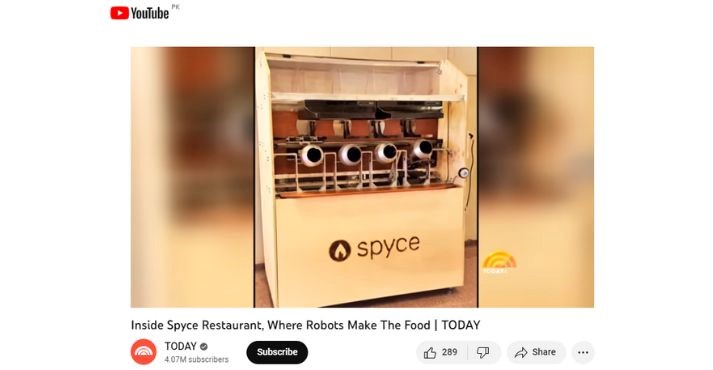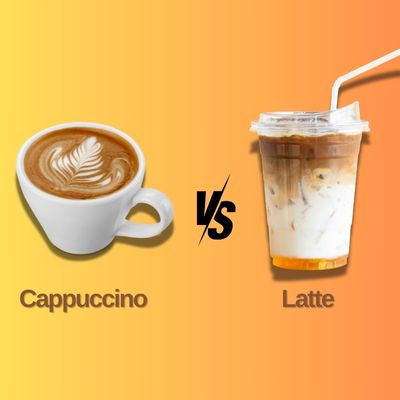The hospitality industry has experienced a seismic shift over the past few years.
From a robotic arm that flips fry baskets to an AI-driven powered virtual assistant and data-driven decisions, the future of food service technology is constantly evolving.
Due to advancing technologies within the food industry, the market size is forecast to exceed 360 billion U.S. dollars by 2028. The future will be primarily driven by the advancement of modern sciences and the increasing application of modern technologies that will move the future food tech world forward.
Therefore, embracing change and adopting new technology in the food service industry is a must-have.
In this blog, we will explore the importance and impact of technology in the restaurant industry and the following top future trends.
So buckle up, grab a fork, and dive into the exciting world of food tech!
What is Food Tech?
Technology today is the most sought-after ingredient for success.
Food tech applies science and technology to production, processing, distribution, and consumption. It plays a key role in shaping the future of how we grow, prepare, and serve food for an enhanced customer experience.
The future of the food industry is radically transforming and pushing the boundaries of what was once thought possible.
Importance of Technology in the Restaurant Industry
With the ever-evolving hospitality technology, restaurants meet customer expectations, stay competitive, and improve profitability in the modern landscape.
Restaurant technology has revolutionized the industry, streamlining operations through digital systems, restaurant management software, contactless payment, data analytics, and leveraging the power of AI and augmented reality.
Automation with kitchen robots and self-ordering kiosks increases productivity and reduces labor costs. Moreover, Technology enhances food safety and sustainability through temperature monitoring and waste reduction tools.
Let’s dive into each of the impacts of technology on the restaurant industry.
Increasing Brand Awareness
Technology has also helped restaurants to increase their brand awareness and reach a wider audience. By creating engaging content and leveraging the power of digital platforms, restaurants can increase their visibility and grow their customer base.
Technology helps restaurants deliver consistent experiences across touchpoints. Repetitive messages and experiences are fundamental to making your brand memorable.
Levelling Up Customer Experience
Delivering a first-class experience has always been the top priority in the hospitality industry.
Therefore, putting technology at the heart of customer experience will level up your game. Utilizing software and digital experiences to optimize the customer journey drives long-term satisfaction and retention.
Also, with food tech, the customer dining experience becomes more convenient. The online food ordering and mobile payment options deliver a well-targeted and more personalized experience.
Ensuring Accuracy through Data Management
Data management is the ultimate game changer!
The Hospitality industry can leverage data management’s power to unlock insights, improve operations, and maximize profits. Leveraging analytics enables you to achieve financial and operational efficiencies while delivering personalized services and offerings.
Personalization is another excellent aspect that can be created through data management and analytics. For example, restaurants can use data to identify booking patterns, optimize room rates, and ensure the right staffing levels.
Improving Operational Efficiency
Optimized restaurant operations streamline various aspects such as order processing, inventory management, payment processing, and accelerating customer service.
When you improve restaurant operations, you reduce human errors, increase response time, decrease wait times, and enhance communication between staff and customers for a better experience.
Upscaling Business And Sales
Upscaling business is the new frontier for businesses in the hospitality industry.
What to sell and when to sell are two key aspects that require attention. And with the integration of technology into restaurant operations, it has become more accessible. Food tech can help you better reach customers and unleash more opportunities for sales.
11 Future Restaurant Technology Trends
The dynamic trends in the hospitality industry are at the forefront of a massive transformation.
Here are the top 11 restaurant trends technology to look out for in the next decade:
1. Virtual and Ghost Kitchen Models
As the restaurant industry is constantly embracing new trends to keep up with the ever-changing demands of customers, the concept of virtual or ghost kitchen models has been gaining traction in recent years.
But what are virtual or ghost kitchens? It refers to establishments designed exclusively for delivery and takeout, with no physical dine-in area, eliminating the need for a traditional dining space. This model allows food service businesses to maximize their profits and reduce costs.
There are different types of ghost kitchens you can opt for depending on your business needs. Such as:
- Single-brand kitchens
- Virtual restaurants
- Commissary kitchens
- Shared-use kitchens
- Delivery-only kitchens
- Pop-up kitchens
Ghost kitchens are one example of the resiliency that the hospitality industry faced during the pandemic. Therefore, the owners opted for delivery through ghost kitchens instead of shutting down the business.
In this sense, you can utilize the ghost kitchens, try new concepts for the menu, and increase customer outreach while keeping the costs low.
2. Robotics and Kitchen Automation
Technological innovations have drastically changed in recent years, opening up endless possibilities that previously seemed like a distant technology in the food service industry.
Regardless of the root of this transition, the adoption of robotics is set to change the face of the food service industry. With a constant drive towards efficiency, kitchen automation has enabled us to focus on core tasks by automating repetitive tasks.
For example, Spyce Restaurant in Boston is the first fast-casual restaurant with a robotic kitchen and only two human employees in-store to provide customer service. Robots do all the cooking, and the culinary director overlooks the operations.

Source: YouTube
3. Staff Scheduling and Attendance Tracking Software
Managing staff and scheduling their shifts, typically on weekends, can be daunting. Geared towards optimizing the efficiency of the food service industry, automated staff scheduling and attendance tracking software allows swift management based on specific parameters and requirements.
This provides numerous advantages to both restaurant owners and their staff. Here’s a closer look at its key benefits:
- Efficient scheduling
- Optimized staffing
- Time tracking
- Real-time visibility
- Employee empowerment
- Focus on customer service
Therefore, employee scheduling and attendance tracking software simplifies restaurant operations and ensures a more efficient and productive work environment.
4. Smartphone Ordering and Payment Solutions
While cash payments used to be the norm, today, customers willingly use contactless payment options. Smart restaurant technology for ordering and payment has become the de facto standard due to its convenience and accessibility.
There are more than 600+ billion smartphone users worldwide and is forecast to exceed 7.7 billion by 2028. Therefore, mobile payments and smartphone ordering make it easier for businesses.
Smartphones allow Customers to browse menus, place orders, and complete payments. It also streamlines the ordering process, saves time, and ensures a seamless customer experience.
Improved operational efficiency, reduced errors, and enhanced customer satisfaction are key benefits of restaurant ordering technology, making it a must-have for businesses.
For example, Burj Al Arab Hotel in Dubai allows customers to book tour and dinner packages for individual or group visits online. It allows the hotel to create a personalized service for their guests while enjoying the overall experience.

Source: Inside Burj Al Arab
5. AI-Powered Chat and Virtual Assistants
The power of virtual assistants and AI chatbots are the face of future food tech that will transform the customer service experience in the food service industry.
However, the distinction between a virtual assistant and an AI chatbot is only sometimes clear, as both are used for automated service but have different capabilities.
AI-powered chats have taken the industry by storm. But what are they? AI-based chatbots are trained to have human-like conversations using natural language processing (NLP). Chatbots increase sales by 67% and quickly adapt their answers to new environments and patterns.
Virtual assistants (VA) are your right-hand person to handle customer inquiries, process orders, or resolve customer issues. But that’s not all; a VA can handle all the nitty-gritty of arrangements, from dinner reservations to deciding the menu and crafting the perfect customer experience.
6. Digital Restaurant Management Solutions
Digital restaurant management solution is a point of sales software for restaurants, hotels, and cafes in the food service industry.
These cloud-based systems are gaining traction due to their numerous advantages over traditional systems, such as flexibility, scalability, and cost-effectiveness.
Also, these food service management technologies automate numerous tasks essential to running a restaurant, such as menu management, inventory tracking, online ordering, staff scheduling, and more.
They provide real-time access to data and insights to help you make informed decisions for an enhanced customer experience.
Here’s why you should invest in digital restaurant management solutions:
- Increases efficiency
- Point of sale
- Online ordering
- Floor and table management
- Improved marketing
- Reduces food costs
- Increases ROI
- Elevates experience
Therefore, restaurant technology for efficient operations has become indispensable to modern dining establishments.
7. Advanced-Data Analytics
Big data is transformational for every industry. It is often referred to as the digital gold.
Data analytics has become a crucial part of the future of the food service industry. Restaurants use data to gather, analyze, and utilize extensive data sets—the use of data aids in making more informed business decisions.
Also, restaurants can use data to track customer behavior, assess menu performance, and evaluate marketing campaign effectiveness.
Here are some more benefits of utilizing advanced data analytics:
- Improve guest experience
- It makes marketing more effective
- Menu optimization
- Cost reduction
- Fraud detection
- Staff Productivity
- Supply chain optimization
- Forecasting demand
- Compliance monitoring
Data analytics helps restaurants understand their operations, identify trends, and make real-time adjustments to improve efficiency and profitability. With this knowledge in your pocket, you’re all set to use analytics to improve your hotel operations seamlessly.
8. Augmented and Virtual Reality
Augmented reality (AR) and virtual reality (VR) are gaining popularity in the restaurant industry for boosting sales and enhancing customer experience.
Virtual reality can create restaurant virtual tours, allowing customers to explore menus and facilities remotely. In comparison, augmented reality enables interactive experiences, such as menu items coming to life on mobile devices.
What are the case applications of AR and VR in the hospitality industry?
- VR can be used for storytelling about the restaurant, viewing the menu’s native origin, and specialized items.
- Gamifying the experience through VRR can boost customer engagement and increase brand loyalty.
- AR/VR can also be used to help train back-of-house staff.
- Restaurant designers and architects can use AR to visualize and plan the layout, decor, and furniture placement.
- Enhance the dining experience by using VR headsets to transport themselves to different locations while enjoying their meal.
These case applications demonstrate how AR and VR can transform various aspects of the food service industry. As these technologies evolve, their impact on the industry will likely grow even further.
9. Interactive Digital Signage
If you’re a restaurant owner looking for unique ways to attract and retain customers, digital signage is the answer. Digital signage is best for evolving the customer experience and conveying the message. It is redefining how restaurants communicate and leave an impression on customers.
Digital signage you are most likely to come across include:
- Digital menu boards, both in-store and in the drive-thru
- Interactive kiosks, often used for contactless ordering
- Digital displays, which advertise seasonal, hourly, or promotional specials–and more
These digital displays showcase menus, specials, promotions, and personalized customer greetings.
Also, provide real-time updates and quick changes to menu offerings and prices. Digital Signs can be utilized for in-restaurant advertisements, increasing revenue. It offers a platform to highlight local businesses and community events.
10. Enhanced Table Reservation and Seating Management
For restaurant owners and managers, table reservation and seating management can be challenging, particularly during peak hours. But, with modern-day technology, the food service industry is adapting to online table reservation systems to improve operational efficiency and customer experience.
The benefits of the online table reservation system are:
- Improved customer service and reduced wait time
- Collect customer preferences for personalized experiences
- Minimize revenue loss due to unoccupied tables
- Accommodate larger parties more efficiently
- Adapt to dynamic situations seamlessly
- Targeted promotions to boost reservations during off-peak hours
- Reduce manual reservation management
Also, an online reservation system helps you to build a robust customer database. This data can be leveraged to enhance customer service and provide a deeper insight into guest behavior.
11. Smart Food Safety and Temperature Management
Smart food safety and temperature management technology in the restaurant industry is designed to ensure the safe handling, storage, and preparation of food.
It involves real-time tracking and control of food temperatures, storage conditions, and compliance with safety standards to prevent foodborne illnesses and maintain food quality.
How does this technology trend help the food service industry?
- Monitors food temperatures continuously, minimizing the risk of bacterial growth and foodborne illnesses
- Maintains the quality and freshness of ingredients
- Reduces the manual effort required for temperature monitoring and logging
- Minimizes food spoilage, leading to cost savings over time
As food tech evolves, integrating predictive analytics will help you forecast temperature fluctuations and prevent food spoilage in advance. And cloud-based platforms for centralized monitoring and remote access to temperature data from multiple locations.
Benefiting from the latest technology
Food tech is a major driver of the transformations in the food service industry.
As we have already discussed numerous customer benefits of food technology, it is evident that the future of the food service industry holds exciting possibilities.
These trends, ranging from AI-powered online ordering to virtual reality experiences, are set to revolutionize dining and customer interaction with food.
The future holds exciting possibilities for technology in restaurants, including seamless experiences, safety enhancements, and sustainability initiatives. Today, restaurants are better poised than ever to meet customer expectations with these technological advancements.
The future of restaurant technology promises an exciting journey. Both industry professionals and food enthusiasts can benefit from the top Food Service Trade Shows in Singapore for 2023/2024 and learn about the latest technologies that will impact the industry positively.
Conclusion
In a nutshell, the future of food service technology is poised for a transformative shift driven by a confluence of factors that cater to evolving consumer expectations and industry demands.
The latest food tech trends have taken a more direct approach to solving issues and bridging the gap between the industry and the customers.
Redefining how customers engage with restaurants, food service technology promises a more efficient, sustainable, and engaging industry that adapts to the ever-evolving needs of customers and the planet.
From the food service future of packaging processes to lowering operational costs, technology is helping us resolve significant obstacles.
However, large-scale adaptation of these technologies will take time. Not to mention the costs of implementing these technologies, the food service industry still requires more human-centric management.








